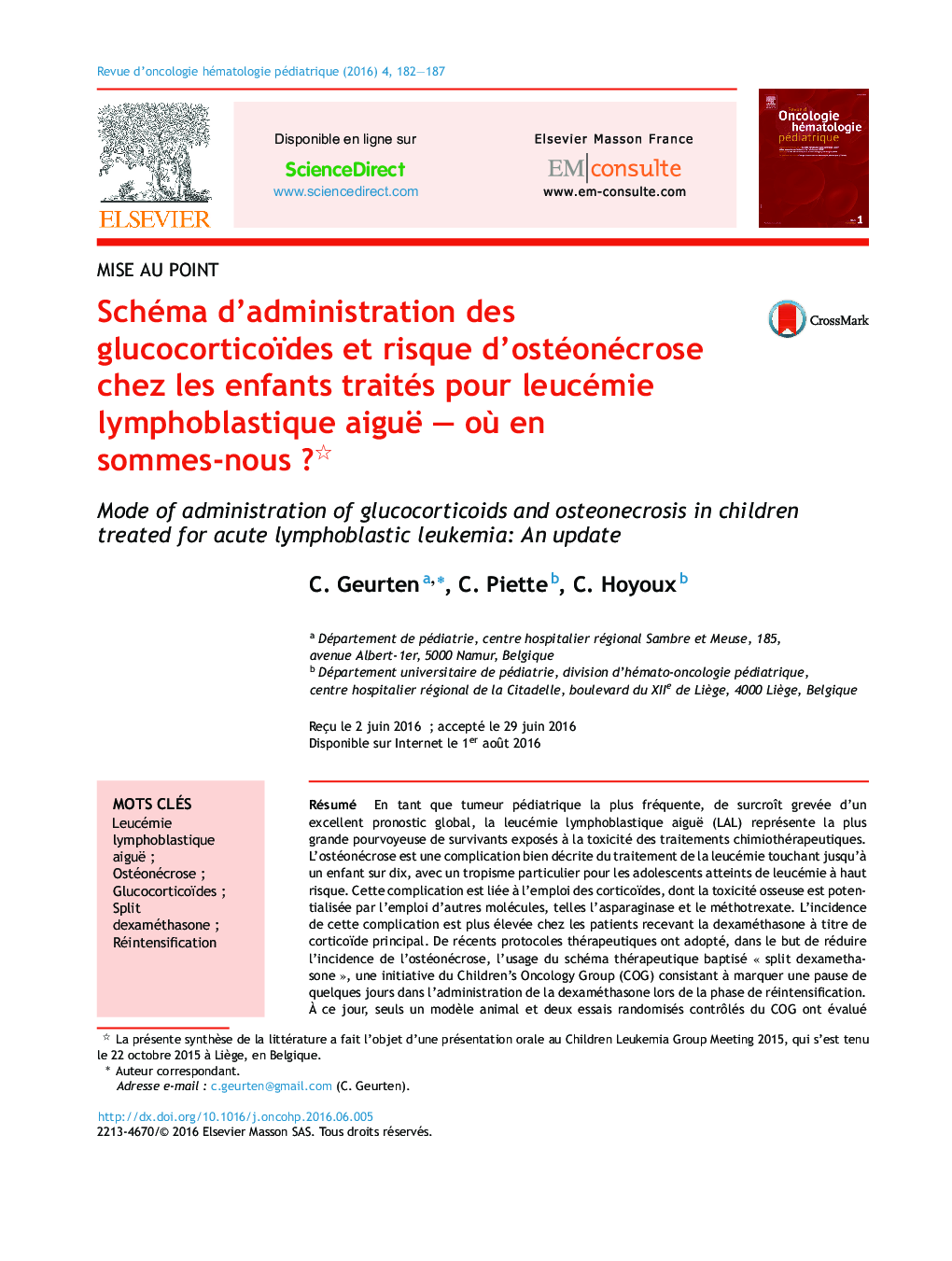| Article ID | Journal | Published Year | Pages | File Type |
|---|---|---|---|---|
| 3333179 | Revue d'Oncologie Hématologie Pédiatrique | 2016 | 6 Pages |
Abstract
Acute lymphoblastic leukemia (ALL) is the most frequent childhood malignancy, which makes it the biggest provider of long-term treatment-induced sequelae among childhood cancer survivors. Avascular necrosis of the bone is a complication of corticotherapy occurring in about 1Â to 10Â % of patients and affecting mainly teenagers with high-risk leukemia treated with dexamethasone-based protocols. Strategies to reduce the incidence of this functionally-threatening complication include interruption of administration of dexamethasone during reintensification, a modality called “split dexamethasone”. This model was first suggested by the Children Oncology Group (COG) in its CCG 1961Â trial. The following review aimed at analyzing available and trustworthy data studying efficacy and safety of this mode of administration, that has been adopted by several current ALL therapeutic protocols. Only two randomized controlled trials from the COG (CCG 1961Â and AALL0232) and one animal-model laboratory study by Yang et al. have been led to specifically address this matter. On the whole, those studies tend to show the benefits of “split dexamethasone”, as it has been proven to reduce incidence of osteonecrosis in children with high-risk leukemia by 50Â % in CCG 1961Â and 33Â % in children aged between 10Â et 12Â in AALL0232, without affecting event-free survival. Furthermore, AALL0232Â also studied osteonecrosis incidence in children treated with prednisolone versus dexamethasone in induction. Results revealed a significantly lower incidence of osteonecrosis in the prednisolone arm. Data collected in mice in a laboratory setting have highlighted the fact that concomitant administration of asparaginase and glucocorticoid in induction hastens the development of osteonecrosis. In conclusion, “split dexamethasone” has proven to be a valuable, simple and safe way of preventing occurrence of avascular necrosis. But limited data are available, and more studies, arising from other groups than the COG, have to be led. Then, other strategies aiming at reducing incidence of this complication, such as high-dose prednisolone-based protocols or modification of modalities of asparaginase administration, must still be explored.
Keywords
Related Topics
Life Sciences
Immunology and Microbiology
Immunology
Authors
C. Geurten, C. Piette, C. Hoyoux,
